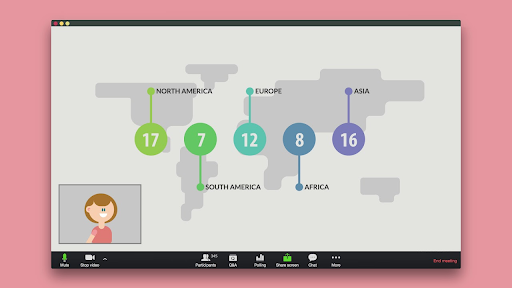As each of us grows and moves through life, we learn new things and accumulate knowledge. It is no different with any organisation doing business. You may start with a certain defined amount of knowledge assets, but as you move forward, you learn new things about your business, products, and customers.
But what do we do with this accumulated knowledge? How do we identify what parts of it are useful and organise that knowledge to make it accessible by all our staff and, in some circumstances, by our customers, too? Our intellectual capital can be as important as financial capital and even human resources, and knowing how to manage it is crucial to our business.
What is Knowledge Management?
As the name suggests, knowledge management (sometimes known as KM) refers to the process of managing all accumulated types of knowledge within your organisation (and some from external sources). That includes identifying relevant knowledge, defining and categorising it, codification, structuring it, and retaining and sharing all relevant knowledge with your business, stakeholders, and employees.
The end goal of knowledge management strategies is to improve your business’s efficiency in the long term by allowing codified knowledge to be collected and shared across organizational structures. It can be used to inform the training of new and existing staff and help create a knowledge base for the company. There are three main identifiable stages to knowledge management:
- Accumulating relevant knowledge
- Storing this knowledge
- Knowledge-sharing across the organisation
What you want to achieve through any knowledge management strategy is creating an ongoing learning culture where all pertinent information is shared and where your employees actively seek out new knowledge to improve their efficiency, competency, workflows, and productivity.
Before you consider a knowledge management tool for your organisation, you first need to consider the main two types of knowledge you should be looking at and accumulating; explicit and tacit knowledge. There’s also implicit knowledge, but that is of less importance in this context.
- Explicit knowledge: This is the easiest type of knowledge asset to accumulate, share, and teach. It usually takes the form of factual information and data. Examples of explicit knowledge include the information in technical manuals, guides, how-to videos, etc.
- Tacit knowledge: While this relies more on intuition and is not as simple to share with others, it can still be essential. A good example of this would be in sales. You can easily teach the explicit knowledge (facts about the product), but the tacit knowledge part would be things like reading the body and verbal language of the potential purchaser.
Importance of Knowledge Management

Before using knowledge management tools and knowledge bases, much of the knowledge within a company was not documented or structured. This made it difficult to access and put much of it at risk of being lost (if an experienced staff member left, a lot of knowledge was lost with that departure).
And even in modern business, the fact that many organisations have multiple silos can mean that different batches of knowledge can be isolated and difficult for other parts of the business to access and utilise. There can also be the hurdle of ‘tribal knowledge’ where information is learned and only shared within a team or department.
And if we rely too much on information technologies or at least limited technology, we can also lose accumulated knowledge and lessons learned. Hard drive storage can fail, email accounts can be lost or deleted, and with them, we lose any knowledge stored there.
Having a good knowledge management policy and the process is, therefore, essential. It also helps with workflow and productivity, as if knowledge is managed and stored efficiently, then employees do not have to spend a lot of time looking for the information they need.
And in the modern world of business, with many organisations having multiple physical locations and many staff working from anywhere, managing, storing, and making sure that information systems are accessible to all is an important factor in successfully doing business. It is also a major factor in how to improve customer experience.
Knowledge Management Examples and Best Practices
Examples
It can help understand the concept of knowledge management if you look at some examples of different approaches.
i. Mind Map.
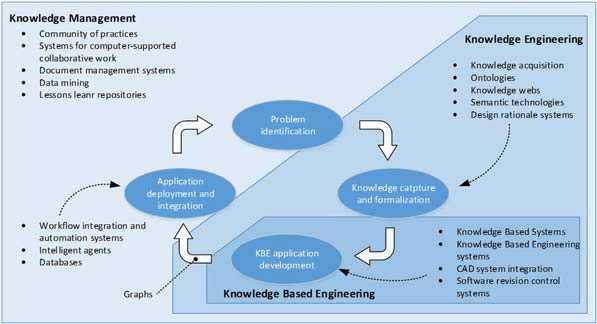
Creating a mind map that relates to your own organisation is a great way to identify the different components of your own knowledge system. It can aid employees in visualising their place within it and assist managers and knowledge workers in identifying where strong and weak links in the chain exist.
ii. System.
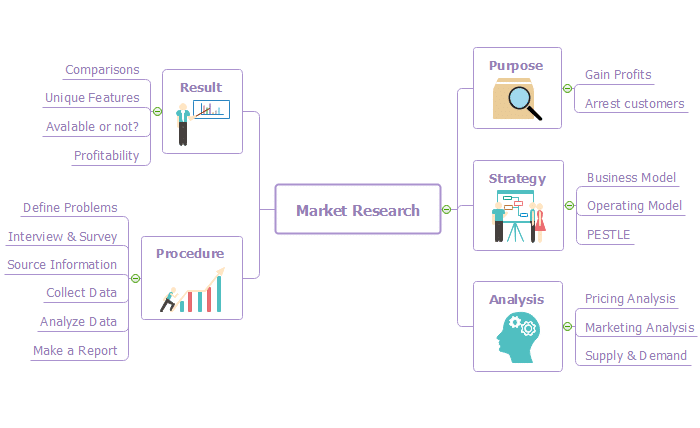
Looking at examples of how a company has structured its knowledge management approach can help you build your own process. It can show you where you need to add new data or information and strengthen existing information. Making data-based decisions is something that you will find in almost every aspect of your business.
iii. Lifecycle.
A major step to understanding the role of knowledge management within your business is to look at the KM lifecycle:
- Identify the current knowledge within your organisation
- Identify the gaps in the knowledge and what is required by your staff
- Make a plan on how to acquire, structure, and develop that knowledge
- Plan on how that information will be shared in your communities of practice and how it can be accessed. Information management and knowledge transfer should be well thought out.
- Encourage growth of learning culture and use of your acquired knowledge.
- Regularly audit and maintain your knowledge and add/update when needed.
- Identify redundant knowledge (for example, regarding a product not carried anymore).
Best Practices
Following a setlist of best practices can help towards successful knowledge management. As the needs of organisations can vary greatly, knowing how these tips fit your needs is a crucial first step.
1. Needs and Problems.
Before you embark on the KM journey, know what your needs are and what problems you face. Understand that technology is a tool in this process and not a solution. It may require your entire organisation to establish a knowledge-centric mindset that will encourage and nurture a learning culture.
Who needs the knowledge? Is it only a percentage of your workforce (for example, sales), or is it something that needs to get rolled out to everyone? And will that knowledge need segmenting according to roles? Setting out a roadmap for the why, where, and how of KM will make the process easier to implement.
2. Measuring.
How do you know your KM is working if you have no way of measuring it? While traditional metrics may not be of great use when evaluating KM, finding ways of monitoring and measuring how well it is working helps with the ongoing maintenance and improvement of your KM.
For example, an IT organisation uses a service knowledge management system (SKMS). You can assign KPIs to the system’s incident management actions to see if users can find and access information easily and if your information system is sufficient to provide a solution.
3. Create and Use!
There is little point in creating a good KM system if you are not going to use it. You may not attain your stated goals if you do not exploit your KM as much as possible. Your structure should be designed not just to manage your knowledge but to encourage change and nurture the growth of your learning culture.
It should be scalable to the growth of your business and adaptable to changing needs. It should be able to be integrated with existing and planned technology across your business. It would help if you also listened to the experiences of your end-users, not only in creating KM and content management but also in how it evolves and develops.
4. Encourage Diversity.
Particularly in larger companies, the need for knowledge creation will be complex. That means that your eventual knowledge resources will likely be enormous. Needs will vary greatly between teams or departments, and this is something you must recognise when structuring your knowledge.
Avoid making all your knowledge assets long-form pieces. Be diverse with how you present that knowledge to any stakeholder or employee. Present the information about how-to guides, like videos, as lists of answers to FAQs, or as white papers. And ensure that your knowledge base is easy to navigate so that employees can find the information they are looking for quickly.
5. Scalability. Your knowledge needs to be scalable and constantly evolving. That means allowing any worker to access information and add to it from their own experiences. KM should no longer only be the domain of your information technology (IT) department but the responsibility of all.
Sharing the accumulated knowledge should be as easy as sharing a status on social media. Technology, including automation and AI-driven systems, can play a big role in this area and can help bring users and information together with fewer issues. Company intranets are a great way to share information internally.
Benefits of Knowledge Management

You can separate the benefits of KM into two main categories; immediate effects and future effects. The former include:
- Better flexibility within your business
- Improved and quicker decision making and problem-solving
- Increases in innovative thinking
- Better support for your employees in growth and development
- More sharing of expertise and specialist information
- Increased rates of communication
- Better overall business processes
Once you have a good KMS in place, the benefits above are the ones you would expect to see developing quickly. But there will also be future knock-on benefits to your organisation:
- The ability to create better products and services in the future
- Improvement in the strategies you develop internally
- Increases in efficiency, productivity and, ultimately, profitability
- Make the most of existing skills and knowledge as well as encouraging new organisational learning
- Identify any market trends and increase competitive advantages
- Grow your intellectual capital and use it to its best ability
Knowledge Management Process
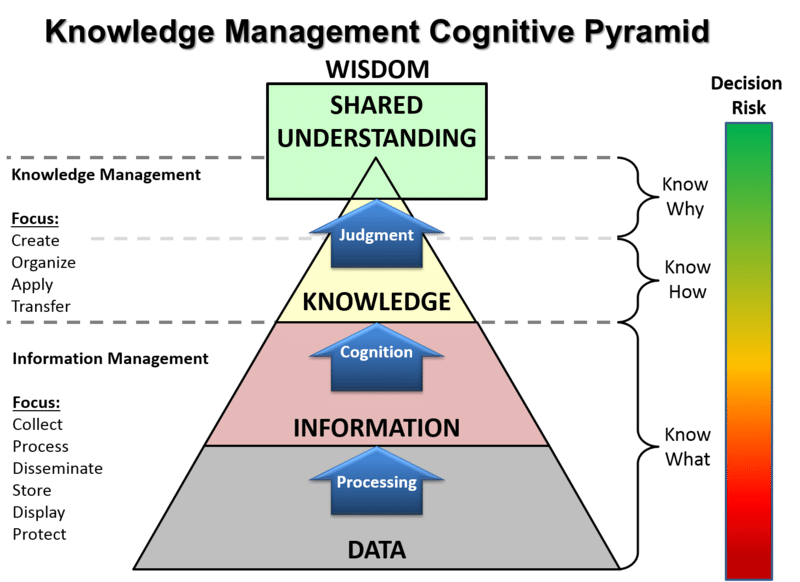
When it comes to considering knowledge management processes, it helps look at the different parts of that process. Each step should be thought about carefully in advance before moving forward with implementation. Keep goals, such as gaining a competitive advantage, at the forefront of planning.
1. Acquisition
Acquiring the knowledge you need is, of course, an essential step. But what knowledge do you need? And where do you acquire it from? Once you have identified what data you need to collect, you can then identify the sources you will collect it from. There will likely never be a scenario where you collect from one place unless your needs are very narrow and focused.
Depending on your needs, data can come from:
- Manufacturers
- Technical experts
- Experiential learning
- Competitors
- Research
2. Storage
How you store your data is also of crucial importance. It has to be stored in such a way that it is both safe and widely accessible. The best data in the world is useless if your employees cannot easily access and use it. It also has to be well organised so that staff do not waste time looking for a specific question.
A computer database is the most likely repository for your organisational knowledge, and it needs to be both organised and secure. Your information has to be backed up so that the information is not lost in the event of any issues. And, as you want your information types to be diverse, they should also be segmented and categorised.
3. Distribution
How you distribute your collected knowledge is also essential. It has to work efficiently and smoothly. Your explicit knowledge can be distributed in several ways, such as via your intranet. Accessing the storage (database) is the most obvious and will also be the most often used. Staff should know how to navigate these areas and find the needed information.
Distributing tacit knowledge is not as straightforward but still easily achievable. For example, you may want an experienced salesperson to pass on their knowledge of verbal and non-verbal clues when closing a sale. They could do this through live training or via webinars and video conferencing sessions.
4. Use
The final step in the process is how and when your employees use the information. This could be to help with a customer’s enquiry or when they need to make work-based decisions. How they apply that knowledge will be via direction or routine.
Direction is when the person who holds the knowledge passes that information to the person enquiring about advice or directions (such as advising a customer how to set up a Smart TV over the phone). Routine is utilising the acquired knowledge embedded in any rules, products, etc., which inform future behaviour.
Knowledge Management Framework
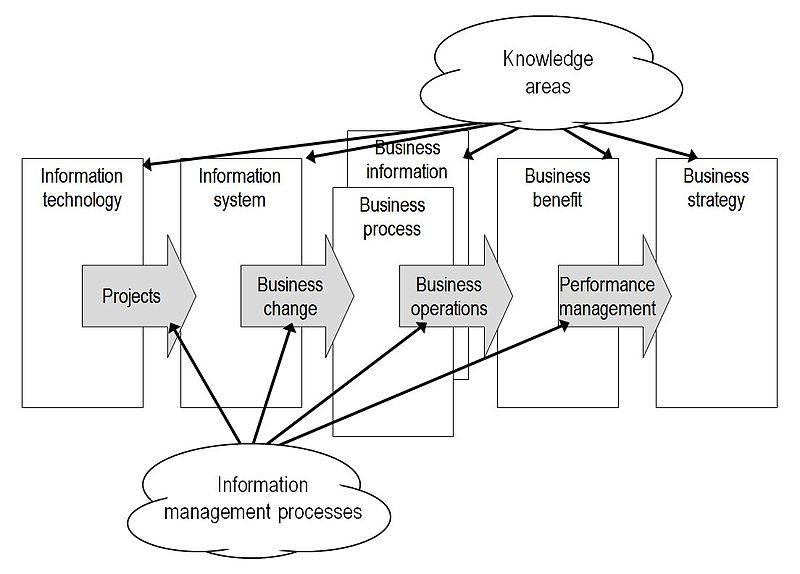
Building your actual knowledge management framework can depend on the needs of your organisation. Multiple factors can influence the KM process’s various steps, which means any framework can be structured and presented in many ways, too.
You may choose a model that gives a general sequential overview of your knowledge. Or you may opt for variants that show the various processes and how they overlap and interact so you can recreate what actually happens within your particular organisation. But this second option can be hard to understand and may only impart a limited amount of actual knowledge.
The bottom line is that there is no ideal KM framework that shows all the aspects you want with all the detail you need. You have to manage your knowledge framework to have a focus and origin that suits your needs, but that recognises its limitations. But one common foundation is that your KM framework should answer three basic questions:
- How/What? Your actual processes of knowledge management.
- Why? The reasons for using a particular method.
- When? The timing is chosen for using any particular method.
What are Knowledge Management Systems?
A knowledge management system is an IT system used to store and access the knowledge you have acquired in its broadest definition. Its functionality allows you (your staff) to improve their understanding, encourage collaboration and discussion, and align with your organisation’s processes.
It can be used purely as an internal tool for a company or a department/team but can also be used as the central hub of your knowledge base for your clients/customers. A more focused definition would be that a knowledge management system (KMS) helps your staff use acquired knowledge to achieve tasks and work better.
Included within your KMS will be some form of the document management system. And while you will find that there is a wide range of KMS options available, most of them will share some common characteristics and functionalities. These can be customised or added to fit your needs. They include:
- How-to guides or tutorials
- Document management systems
- FAQs
- Forums or discussion boards
- Training programmes (that may or may not include certification)
- Relevant research and case studies
- Webinar programmes
How to Improve Knowledge Management
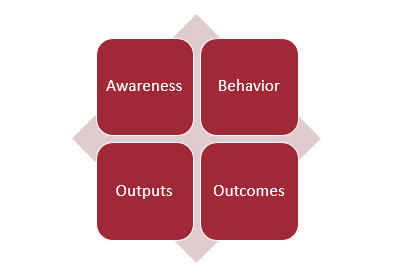
Your staff will likely spend a lot of their working hours searching for information, replying to enquiries or making them, and discussing and collaborating on issues with colleagues. If you improve and streamline your KM, that means you can reduce the time spent on these tasks and see an increase in overall productivity.
Improving your KM does not necessarily require financial investment in new tools or systems. You can improve them simply by auditing your current system and looking at ways to make your whole KM environment more open and accessible. Here are five tips that can help you improve your KM:
- Involve Staff. Your employees know how your systems work and will be the first to spot flaws and gaps. Involve them in both the creation and editing of your KM data.
- Centralise Knowledge. All staff want to do their job as quickly as possible. If your existing knowledge is not organised well, they will create knowledge silos. Organising and centralising knowledge enable them to do that work quickly.
- Use Metrics. To aid with streamlining, look at two particular metrics; what data is most accessed (and not accessed) and what information most leads to customer issues.
- Management. Especially in larger companies, appoint a chief knowledge officer to oversee your KM processes and monitor and report on successes and issues. Chief knowledge officers can be a huge benefit in improving your overall KM.
- Learning Culture. Encourage your employees to use existing knowledge in simple tasks and build an organizational culture and increase your intellectual capital.
The Takeaway
Good knowledge management lies at the heart of how a business operates, both internally and how it interacts with its customer base. You can think of your entire KM system as a sort of organisational Wiki where your staff can access information and create and edit the content they need.
Your approach to KM should be well thought out and should consider the needs – and the views – of all involved stakeholders. It would help if you also recognised that the result of a good KM system is that staff productivity will improve and profitability increase.
Originally published Jun 08, 2021, updated Feb 14, 2024


